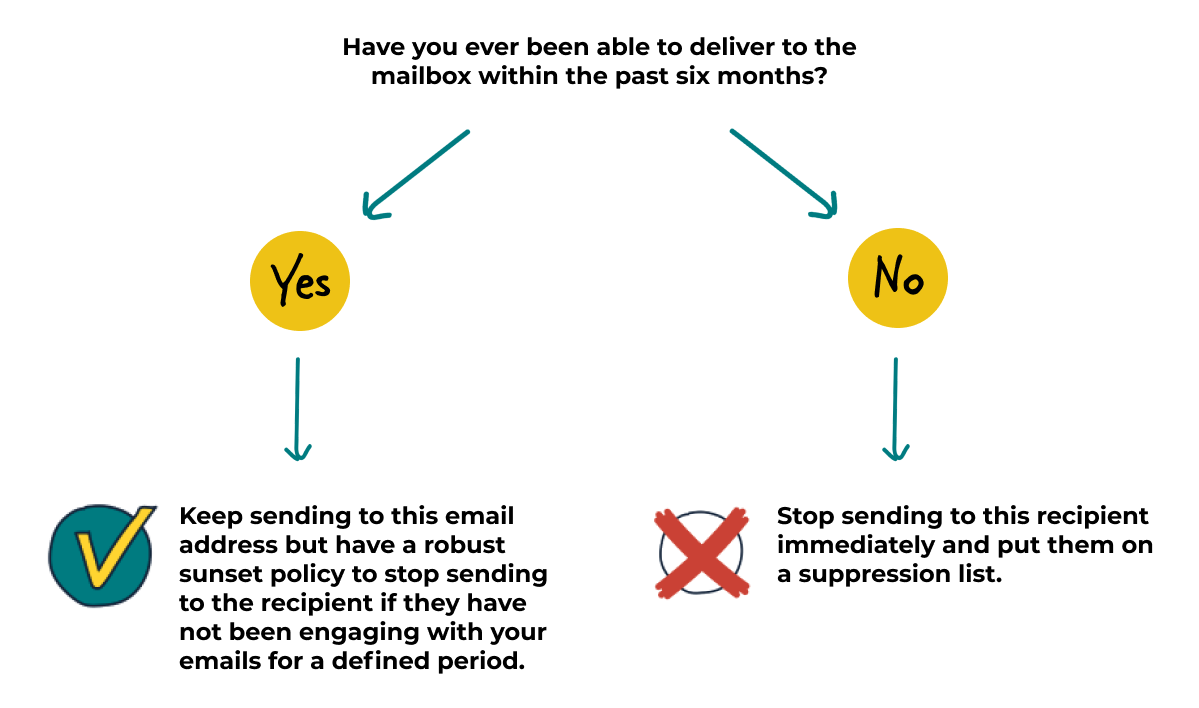news
Poor sending practices trigger a tidal wave of informational listings
In this News Article
Jump to
Introduction
The recent spate of informational listings from our researchers has created waves in the sending community. But perhaps more pertinently, it’s highlighted some pretty poor sending practices. Here’s further explanation, helpful hints and tools, and background to help calm the waters.
What triggered this recent bout of informational listings?
Three words:
Poor.
Sending.
Practices.
Our researchers are observing mail being repeatedly sent to multiple mailboxes that have NEVER accepted one single message from the sender.
That’s correct. There are various household names (and lesser-known entities) out there who are failing on several fronts when it comes to best sending practices:
- They are not managing their bounces effectively.
- They are sending to recipients without opt-in, i.e., to contacts who have never given their consent to receive email. As one of our researchers reminded me at the time of writing this, "Sending email in bulk to addresses that have never given consent is spam. Even opening an email and following URLs to figure out "what is this all about" does not mean consent has been given by the recipient."
- There are household names out there who don’t even have a sunset policy in place... you know the one – where you send a contact an email after a specified period of no engagement saying, "Goodbye. Unless you click on the link below, you won't be hearing from us again.”.
If you send bulk email, ask yourself this question and follow the flow chart (and we’re assuming you have opt-in from EVERYONE you’re sending to):

But why did these poor sending practices only trigger a listing recently?
If Spamhaus' detection techniques, rules, and signals didn’t change, you wouldn’t be reading this blog post because the data provided to the community would have been stale within weeks (at best), and we'd have fallen by the wayside like so many other DNSBL providers over the years.
The reason we’ve been part of the industry for as long as Google (both were founded in 1998) is because our researchers are continually improving listing capabilities and detection techniques, ensuring our data can be trusted and relied upon by its users.
In July, Spamhaus Technology advised via the Twittersphere that “The [Project] research team is continually improving detections... and like it or not, this isn’t going to stop, as this recent spate of Spamhaus Blocklist (SBL) informational listings will attest to.
Listening to the community
Continuing with the continual improvement theme... This doesn't just apply to how we handle our blocklists but to how we work with the internet community. We've listened to you and, as a result, have taken these actions:
- Slower introductions: We understand this sudden blast of listings was a shock. From now on, where possible, we’ll try to ramp up these listings with a slower cadence, allowing senders to catch their breath and resolve the highlighted problems. However, these listings won’t stop. Senders need a clear signal that some of their practices are not acceptable and change needs to happen.
- Changes to our email notifications: To try and alleviate the terror of an SBL notification, to quote Laura Atkins, "I love the smell of an SBL listing in the morning", we have updated them to include "Informational Listing" in both the subject and body of the email. Hopefully, this will reduce the heart rate and stop engineers across the globe from being hauled out of bed to review an SBL listing.
Some tools to assist
ASN owners get visibility and can proactively manage their IP space via this portal, which provides a complete picture of Spamhaus listings, and the ability to quickly request removals and track submissions via a Ticket Center. Register for a free account.
This ebook covers everything from general deliverability know-how to identifying and resolving issues for those struggling with getting their email programs.
Confused over what an SBL “informational listing” is?
Once upon a Haus, our researchers always listed IPs and ranges immediately on the SBL. Subsequently, the said IPs would be blocked from sending mail to anywhere up to 70% of inboxes (ouch). “Harsh,” you may say. Well, if the research team observes a cesspit of abuse, then it’s absolutely necessary for this IP or range to be in the dogHaus (thank you Alison G for that term). But what if it's not quite as bad as a cesspit of abuse? What if our researchers are identifying poor sending practices or similar?
This is where informational listings come in. They were introduced on September 22, 2016, and act a little like an early warning system… there’s trouble ahead (i.e., a full-blown – "you'll be blocked" listing) unless you sort this issue out!
Informational listings don't block mail; they are there to warn of issues on the listed range or individual IP address. However, pay attention; ignore these listings at your peril. If you fail to address the highlighted concerns, you will be on the SBL proper. Because at the end of the day, if you're regularly spamming, your IP range deserves to be listed.
A final word... go clean your lists before your IP gets blocked. Please? ;-)